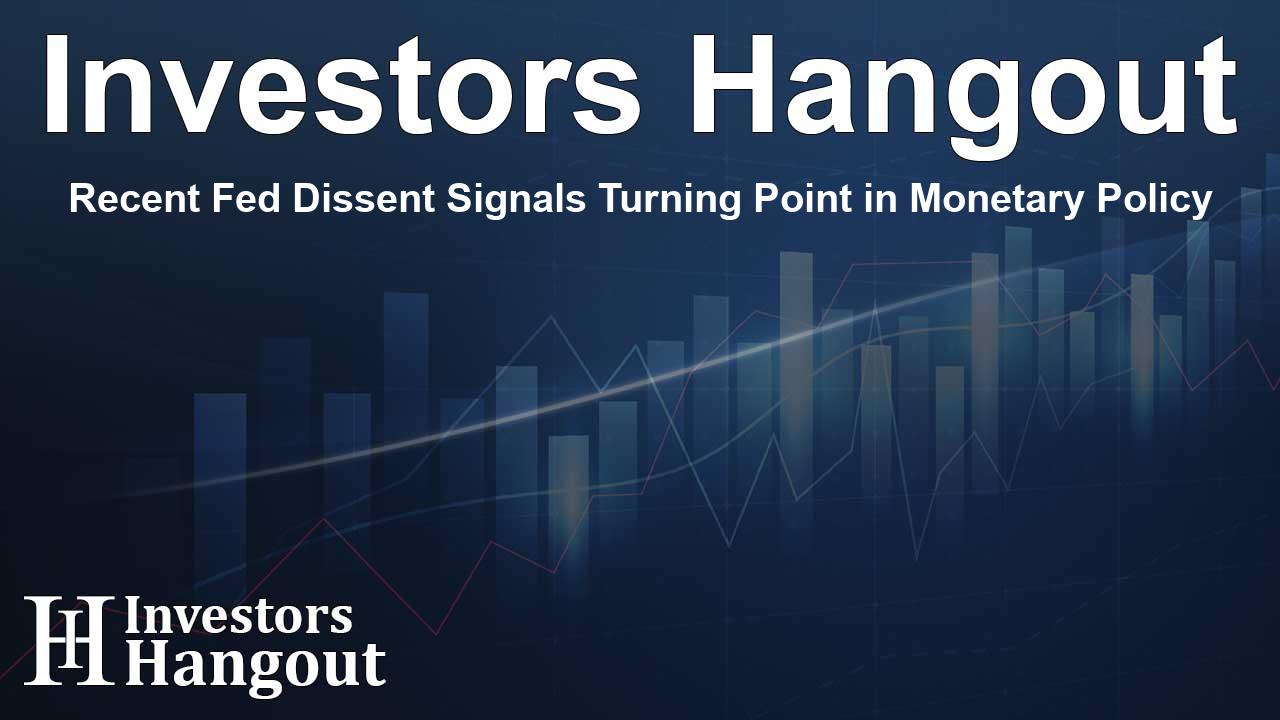Recent Fed Dissent Signals Turning Point in Monetary Policy

The Federal Reserve's Recent Dissent and What It Means
In a pivotal moment for the economy, recent decisions by the Federal Reserve have reignited discussions surrounding the timing of potential interest rate cuts. The recent rate decision, which maintained the Fed Funds rate at 4.25-4.50%, was marked by dissent from two members, Michelle Bowman and Christopher Wallace. This dissent indicates a shift in opinions among policymakers, notably the first dual dissent since 1993.
Historically, dissent within the Federal Open Market Committee (FOMC) has signaled deeper discussions on economic policy and future directions. As the economic landscape evolves, the rationale behind maintaining higher interest rates is continually being reassessed, suggesting that changes might be on the horizon.
Changes in the Fed's Economic Statement
The Federal Reserve made notable adjustments to its economic statements when compared to the prior communication. They swapped out phrases like “economic activity has continued to expand at a solid pace” with more cautious language indicating that “growth of economic activity moderated in the first half of the year.” Additionally, they opted to eliminate the word “diminished” regarding uncertainty in the economic outlook, suggesting that challenges remain on the horizon.
These changes point toward a more cautious stance from the Fed. While the market response post-announcement didn't seem to align with this perspective, it remains to be seen how these shifts will influence monetary policy moving forward.
Insights from Jerome Powell's Press Conference
Following the FOMC meeting, Jerome Powell addressed the media and offered several insights into the Fed's current thinking:
- Monetary Policy Perspective: Powell noted that the economy hasn't displayed the restrictive effects of current policies. However, he acknowledged “downside risks to the labor market are certainly apparent.”
- Labor Market Observations: He mentioned that labor market growth has slowed, compounded by a shrinking workforce due to immigration policies. Thus, he considers the labor market to be “balanced.”
- Future Rate Decisions: Powell indicated that no decisions have been made concerning potential rate adjustments in upcoming meetings.
- Dissent and Policy Discussions: The recent dissent led to robust discussions on monetary policy during the meeting.
- Impact of Tariffs on Inflation: Powell stated that it's premature to evaluate the full effects of tariffs on inflation and reiterated that they aim to avoid spirals of serious inflation.
- Inflation Dynamics: He noted that inflation in services is offsetting inflation in goods, suggesting a nuanced balance in the inflation landscape.
- Long-term Price Effects: Powell suggested there might be “one-time price effects” from tariff impacts, thus signaling a cautious view on future inflation spikes.
Post-conference, the market adjusted expectations around potential rate cuts. The probability of a September rate cut decreased from 68% to 47%, suggesting traders perceive the Fed's approach as more hawkish than dovish.
Community Reactions
The reaction from investors and the community showcases both optimism and concern about the Fed's current stance. As more data becomes available, and as the economic environment continues to shift, stakeholders are eagerly awaiting additional insights into the Fed's plans and its implications for the economy.
Frequently Asked Questions
What was the recent decision by the Federal Reserve?
The Federal Reserve decided to maintain the Fed Funds rate at 4.25-4.50%, with two members dissenting in favor of rate cuts.
Why is the dissent among FOMC members significant?
This dissenting vote indicates differing views on economic conditions and future monetary policy, marking a potential turning point.
What changes were made to the Fed's recent economic statement?
The Fed modified language indicating moderated growth and maintained warnings about uncertainty regarding the economic outlook.
What did Jerome Powell convey in his recent press conference?
Powell highlighted the economy's current state, labor market observations, and the Fed's cautious approach towards forthcoming rate decisions.
How did the markets react to the Fed's recent announcements?
The markets reduced the likelihood of a September rate cut following the Fed's announcement, indicating a more hawkish perception.
About The Author
Contact Caleb Price privately here. Or send an email with ATTN: Caleb Price as the subject to contact@investorshangout.com.
About Investors Hangout
Investors Hangout is a leading online stock forum for financial discussion and learning, offering a wide range of free tools and resources. It draws in traders of all levels, who exchange market knowledge, investigate trading tactics, and keep an eye on industry developments in real time. Featuring financial articles, stock message boards, quotes, charts, company profiles, and live news updates. Through cooperative learning and a wealth of informational resources, it helps users from novices creating their first portfolios to experts honing their techniques. Join Investors Hangout today: https://investorshangout.com/
The content of this article is based on factual, publicly available information and does not represent legal, financial, or investment advice. Investors Hangout does not offer financial advice, and the author is not a licensed financial advisor. Consult a qualified advisor before making any financial or investment decisions based on this article. This article should not be considered advice to purchase, sell, or hold any securities or other investments. If any of the material provided here is inaccurate, please contact us for corrections.
